
Sitting off the West coast of Africa, Cape Verde is a collection of islands that have become the "where-is-that-and-how-soon-can-I-go?" destination for sun seekers.
And with no shortage of direct flights available from the UK and Ireland, interest in these idyllic islands isn't going away any time soon.
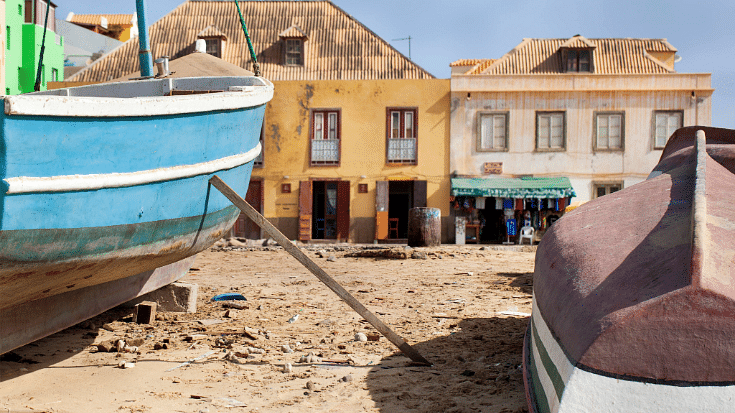
Adobe Free Stock / Peter de Kievith
When's the Best Time to Go to Cape Verde?
But when's the best time to go to Cape Verde and what's the weather in Cape Verde really like month by month?
If you want to avoid gambling your annual leave on the meteorological roulette that is the English summertime, Cape Verde's year-round sunshine is a safer bet.
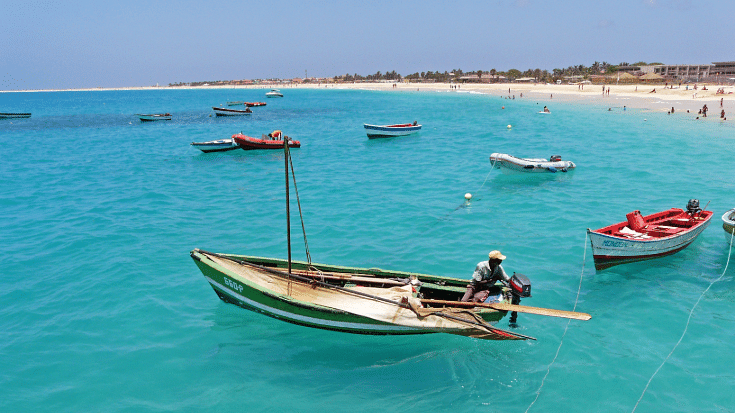
The Best Time to Go to Cape Verde - Quick Take
November to June is generally considered the best time to visit Cape Verde, with the sweet spot being December to March.
The islands enjoy warm temperatures year-round. But these months offer the perfect balance of sunshine without the extreme heat or rain that can appear later in the year.
Water temperatures hover around a comfortable 23 to 25°C in winter, climbing to 27°C by late summer.
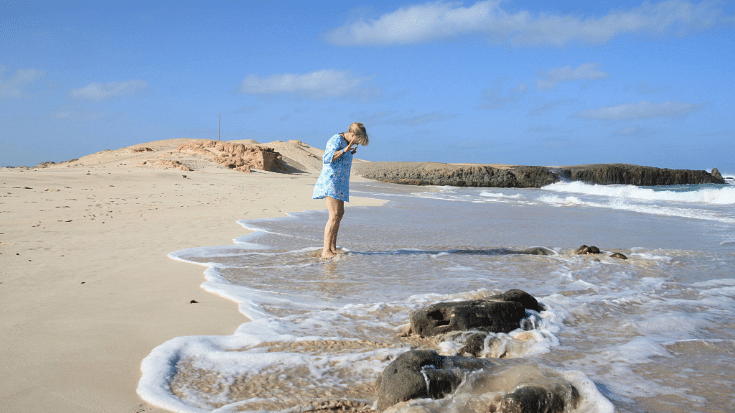
Image by Matthias Lemm from Pixabay
For beach bums: December to May offers calm seas and little in the way of rainfall.
For water sports enthusiasts: January and February bring the most consistent winds, making kite surfing less "flailing helplessly" and more "looking impressively athletic on Instagram."
When to consider avoiding: September is the wettest month in Cape Verde, with short, intense showers and higher humidity. Especially on greener islands like Santiago.
July and August might be too hot for those whose idea of warm is anything above 22°C.
The Harmattan wind, a dry desert wind that sweeps in from the Sahara, usually arrives in January and February.
While it often brings hazy skies and a fine layer of Saharan dust, it mainly just reduces visibility and rarely causes any serious disruption.
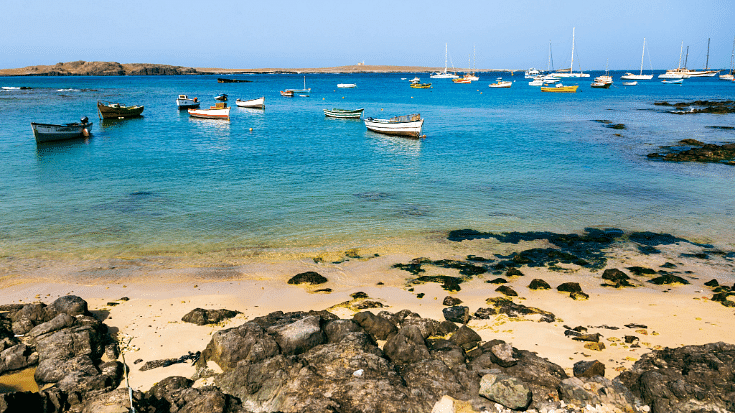
Adobe Free Stock / Alicja Wójcik
Weather in Cape Verde - What to Expect
Sun-seekers rejoice! Islands like Sal and Boa Vista boast up to 350 sunny days a year.
It's worth bearing in mind, Cape Verde often has a high UV index, meaning you can and will turn the colour of a postbox in about 20 minutes if you forget the sunblock.
Sea temperatures dip to 22°C in winter but warm to around 27°C by September. Practically a hot tub by UK standards.
Humidity levels stay comfortable in Cape Verde for most of the year.
Although August to October can feel muggy - especially inland or on greener islands.
Cape Verde Temperature by Month - At-A-Glance
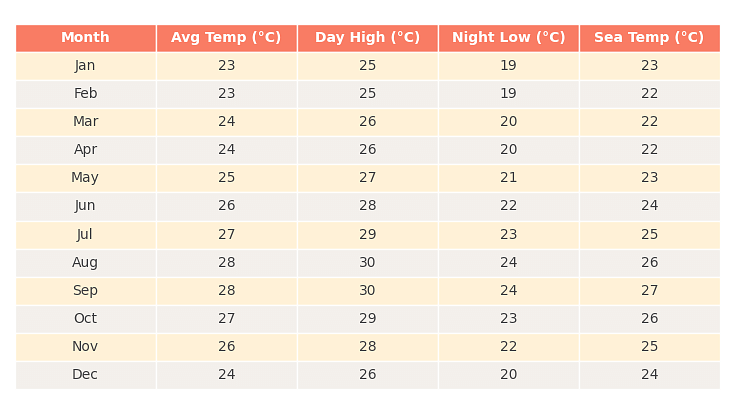
Cape Verde Weather by Month
January to March
The winter sun sweet spot. Warm, dry days with cooling winds that make outdoor activities pleasant rather than punishing.
Perfect for water sports enthusiasts as winds are reliably present without being overwhelming. The sea is refreshing, rather than warm.
April to June
Spring perfection with warm temperatures, clear skies and diminishing winds.
The tourist crowds thin out after Easter, meaning you might get a sunbed without the 6am towel dash. The ocean gradually warms, making swimming particularly enjoyable.
🐢 Turtle Nesting in Cape Verde
Cape Verde is the world’s third-largest nesting site for loggerhead turtles, behind Florida and Oman.
Nesting season runs from July to October, when female turtles come ashore at night to lay their eggs on the beaches.
To catch the magical moment when hatchlings make their way to the sea, visit in August or September and sometimes early October.
Cape Verde is the world’s third-largest nesting site for loggerhead turtles – only the USA and Oman are bigger.
Turtles nest between July and October, when hundreds of them come ashore at night to lay their eggs on Cape Verde’s beaches.
If you want to see baby turtles hatching and making their way to the sea, visit in August or September (and sometimes early October).
Cape Verde is the world’s third-largest nesting site for loggerhead turtles – only the USA and Oman beat it!
Nesting season runs from July to October, when hundreds of female turtles waddle ashore at night to lay their eggs on the sand.
If you're hoping to catch a glimpse of tiny hatchlings making their way to the sea, aim for August or September (and sometimes October).
Turtle-watching tours are regulated to protect the species – so always go with a licensed local guide, wear dark clothing, and keep torches off unless advised.
May brings the start of turtle nesting season - a spectacular sight you can see with responsible guided tours.
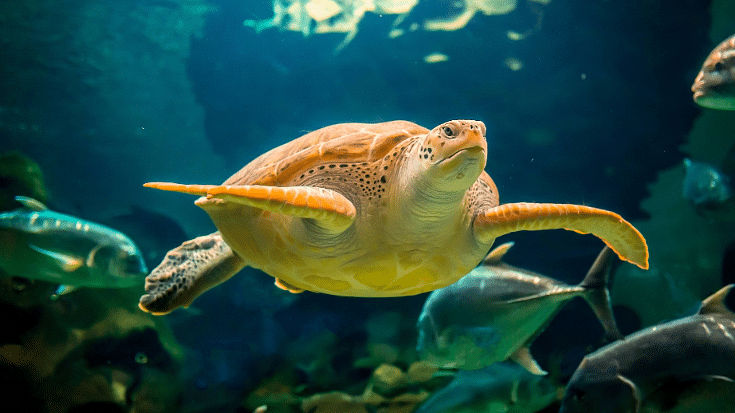
Adobe Free Stock / Vera
July to August
Peak summer heat arrives. The days are hot enough to make beach hopping your main activity.
The winds drop, the sea is beautiful and warm and underwater visibility for snorkelling is at its best.

Adobe Free Stock / vlad61_61
September to October
This is the islands' brief rainy season. Although rainy by Cape Verdean standards means occasional short, sharp showers rather than the drizzle we're used to back home.
September is the wettest month, bringing short, intense showers and higher humidity.
The upside? Lush landscapes on the greener islands like Santiago and Santo Antão, lower tourist numbers and better deals on accommodation.

Adobe Free Stock / Africa2008
November to December
November and December on Cape Verde bring the return of perfect conditions.
The rain disappears, temperatures become more comfortable and the Christmas crowds haven't arrived yet.
November is particularly glorious with green landscapes from the recent rains but clear, sunny skies.
December brings the festive crowds and the prices to match. But the weather is more than worth it.
Tips for Choosing When to Go
School Holiday Considerations
If you're tied to school breaks, Christmas and February half-term offer the best weather/term-time combination.
Easter is excellent too, although prices have been known to rise around this time.
Visiting Cape Verde during the school summer holidays comes with higher temperatures and more people-traffic. But it still beats a rainy campsite in the UK.
Island variations
Not all Cape Verde islands are created equal when it comes to weather.
- Sal and Boa Vista: The most popular islands for UK tourists are flat, desert-like and windier. Great all year for beach lovers who don't mind a breeze.
- Santiago and Santo Antão: These mountainous islands are greener and more humid. The September-October rains make them lush and ideal for hiking.
- Fogo: This volcanic island has various microclimates depending on elevation. The perfect excuse to visit twice.
Cape Verde Packing Tips By Season
- Winter - Nov to Feb: Bring layers for evening sea breezes. That flimsy cardigan you throw in "just in case" might now come in handy.
- Spring - Mar to May: Standard summer clothes plus high-factor sunscreen. The UV is stronger than it feels when the wind is blowing.
- Summer - Jun to Aug: The lightest clothing possible, serious sun protection and perhaps a portable fan to become instantly popular at any beach bar.
- Autumn - Sep to Oct: Light rain gear alongside summer clothes. Think 'British summer contingency packing', with less need for the emergency cardigan.

Adobe Free Stock / Igor Tichonow
Staying Online in Cape Verde
When you've escaped the UK's grey skies for Cape Verde's blue ones, the last thing you want is connectivity problems or unexpected roaming charges.
Stay connected without the admin by grabbing a Cape Verde eSIM before you go.
An eSIM for Cape Verde from Airalo offers hassle-free data that works the moment you land.
No hunting for local SIM card shops, no awkward language barrier conversations. Just instant connectivity for discovering that perfect beach spot.
Finding the best eSIM for Cape Verde gives you one less thing to worry about, letting you focus on important holiday decisions.
Like whether to have another caipirinha or which island to explore next.
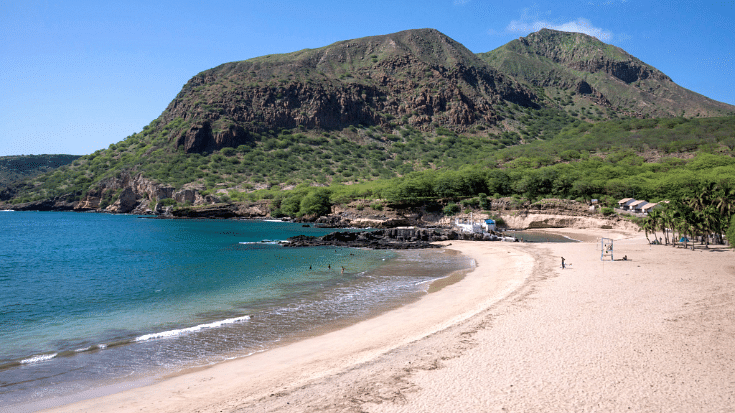
Adobe Free Stock / s-aznar
FAQs
1. What Is The Best Time To Go To Cape Verde?
The best time to go to Cape Verde is between November and June, with December to March offering ideal weather - warm days, low humidity and plenty of sunshine.
2. What's The Weather in Cape Verde Like?
Weather in Cape Verde is warm and sunny year-round. The islands get around 350 days of sunshine annually, with cooler breezes during the dry season and occasional rain from August to October.
3. What Are Cape Verde's Temperatures By Month?
Cape Verde temperatures by month range from 23°C in winter to 30°C in summer. Sea temperatures vary from 22°C in January to around 27°C in September.
4. Does Cape Verde Have A Rainy Season?
Yes, the rainy season typically occurs between August and October. Rain is usually short and intense and some islands become greener and more humid during this period.
5. Do I Need An eSIM For Cape Verde?
Yes - a Cape Verde eSIM is a great option to stay connected. The best eSIM for Cape Verde lets you access data as soon as you land, without surprise roaming charges or local SIM card admin.



